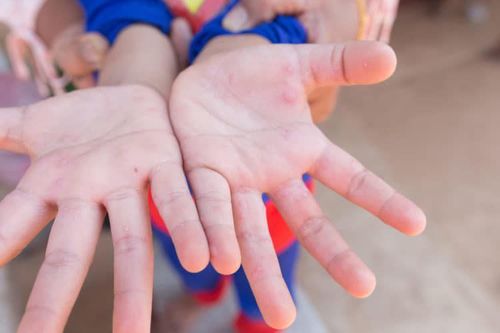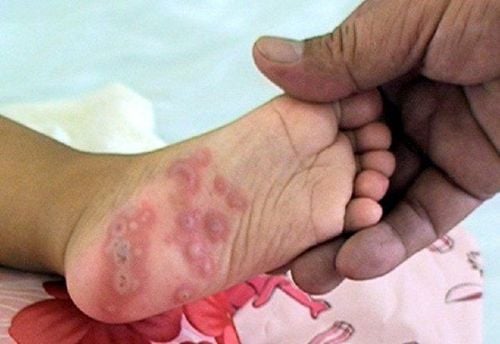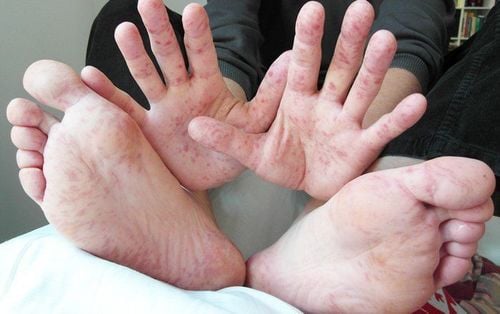This is an automatically translated article.
Hand, foot and mouth disease - a mild, contagious viral infection in young children - is manifested by sores in the mouth and a rash on the hands and feet. Sometimes hand, foot and mouth symptoms are easily confused with foot and mouth disease. The following article will help us understand more about these two diseases.
1. Hand, foot and mouth disease is what?
Hand, foot and mouth disease is an acute viral infection, a disease capable of being transmitted through the gastrointestinal tract, common in young children and capable of causing large epidemics.
Hand, foot and mouth disease is common in Asian countries and is becoming a public health concern in Vietnam.
2. Symptoms of hand, foot and mouth disease
Characteristic signs of hand, foot and mouth disease are high fever, sores in the mouth, on the hands, feet and buttocks with a rash with blisters.
The following are some symptoms of common hand, foot and mouth disease, including:
High fever. Sore throat. The patient feels uncomfortable and tired. The tongue, gums, and inside of the cheeks are sore, red, and blistered. Children find it uncomfortable, or irritable. Eating is not appetizing. A red, non-itchy rash appears, but sometimes blisters, on the palms, soles, and buttocks. Usually, the time from when you are infected until you start to have signs and symptoms of the disease is 3 to 6 days. Fever is often the first sign of hand, foot and mouth disease, followed by a sore throat followed by loss of appetite and malaise.
A day or two after the onset of fever, painful sores may appear on the front of the mouth or throat. The rash can occur on the hands, feet, and possibly the buttocks, occurring over a day or two.
Sores that develop at the back of the mouth and throat may suggest that your child has a viral infection called herpangina. Distinctive features of herpangina include sudden high fever and in some cases convulsions. Sores that appear on the hands, feet, or other parts of the body are rare.
Hand, foot and mouth disease is usually a mild illness that causes only a few days of fever with relatively mild signs and symptoms. Contact your doctor if mouth sores or sore throat prevent your child from drinking fluids. You should seek medical attention if, after a few days, your child's signs and symptoms get worse.
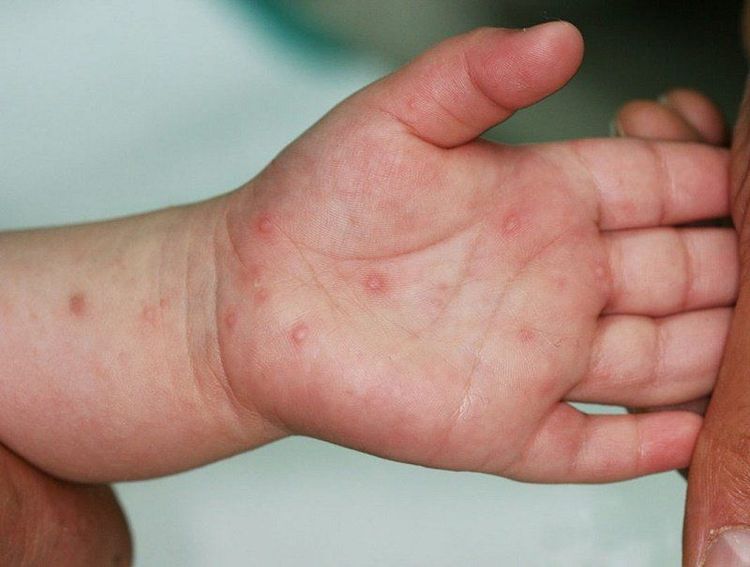
Bệnh nhân bị tay chân miệng thường xuất hiện phát ban đỏ, không ngứa ở lòng bàn tay lòng bàn chân và mông
3. Causes of hand, foot and mouth disease
The most common cause of hand, foot and mouth disease is infection with coxsackievirus A16. Coxsackievirus belongs to a group of viruses called nonovio enteroviruses. Other enteroviruses sometimes cause hand, foot, and mouth disease.
Hand, foot and mouth disease is spread by person-to-person contact with an infected person:
Nasal secretions or throat secretions Saliva from blisters Contact when an infected person sneezes or coughs Hand, foot and mouth disease is most common in children children especially in childcare settings because of frequent diaper changes and potty training, plus young children often put their hands in their mouths.
Although your child is most contagious during the first week of illness, the virus can stay in the body for weeks after signs and symptoms are gone. That means your child can still infect others.
Some people, especially adults, can transmit the virus without any signs or symptoms of the disease.
4. Distinguishing hand, foot and mouth disease and foot and mouth disease
Hand, foot and mouth disease and foot and mouth disease have nothing to do with each other. Foot-and-mouth disease is a contagious viral disease found in animals.
Hand, foot and mouth disease is caused by enterovirus and foot and mouth disease is caused by Foot and Mouth Disease Virus.
The epidemiological features of these two diseases are also different. Hand, foot and mouth disease is a disease that occurs in humans, while foot and mouth disease only occurs in even-toed ungulates such as buffaloes, cows, pigs, goats, sheep, deer, etc. There is no information to show that Foot-and-mouth disease occurs in humans.
5. Risk of hand foot and mouth disease

Bệnh tay chân miệng chủ yếu ảnh hưởng đến trẻ dưới 10 tuổi, thường là những trẻ dưới 5 tuổi.
Hand, foot and mouth disease mainly affects children under 10 years old, usually those under 5 years old. Children in childcare centers are particularly vulnerable to outbreaks of hand, foot and mouth disease because the infection is spread through person-to-person contact and young children are the most susceptible.
Children often develop immunity to HFMD as they age by building antibodies after being exposed to the virus that causes the disease. However, adolescents and adults can get the disease.
6. Complications of hand, foot and mouth disease
The most common complication of hand, foot and mouth disease is dehydration. It can cause sores in the mouth and throat, making swallowing painful and difficult.
Monitor closely to make sure your child regularly drinks fluids throughout the illness. If dehydration is severe, intravenous (IV) fluids may be needed.
Hand, foot and mouth disease is usually a mild illness that causes only a few days of fever and relatively mild signs and symptoms. A rare and sometimes serious form of coxsackievirus that can involve the brain and cause other complications:
Meningitis : This is a rare infection and inflammation of the membranes (meninges) and cerebrospinal fluid covering the cerebrospinal fluid (CSF) around the brain and spinal cord. Encephalitis: This serious and potentially life-threatening illness involves inflammation of the brain caused by a virus. Encephalitis is very rare. Washing hands properly with antibacterial soap, maintaining general environmental hygiene, limiting contact with infectious people.... are some of the preventive measures that can help reduce the risk of HFMD infection.
Please dial HOTLINE for more information or register for an appointment HERE. Download MyVinmec app to make appointments faster and to manage your bookings easily.
Reference source: Mayoclinic.org



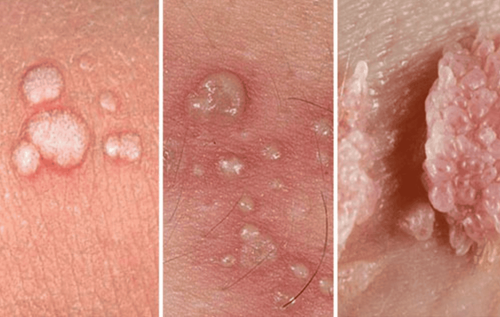
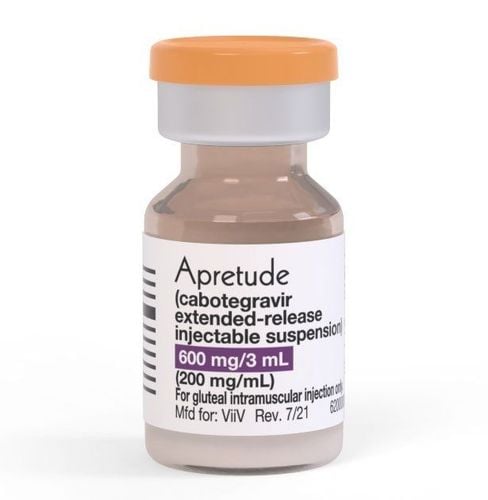
![[Vinmec - Q&A with experts] Number 02: Children's health in hot season (Part 1)](/static/uploads/small_20190723_082829_863235_Banner_FB_1200x628_max_1800x1800_png_982bf67b1c.png)
